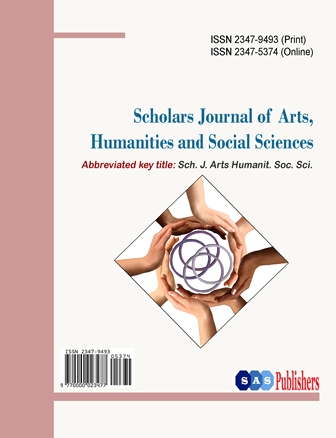+91-9365665504
+91-8724002629
submit@saspublishers.com / saspjournals@gmail.com

An International Publisher for Academic and Scientific Journals
Author Login
Scholars Journal of Arts, Humanities and Social Sciences
Journal Home
Description
Editorial Board
Archives
Indexing
Statistics
Title : Scholars Journal of Arts, Humanities and Social Sciences
Abbr : Sch J Arts Humanit Soc Sci
ISSN (Online) : 2347-5374
ISSN (Print) : 2347-9493
Discipline : Arts, Humanities and Social Sciences
Frequency : Monthly
Country : India
Language : English
Abbr : Sch J Arts Humanit Soc Sci
ISSN (Online) : 2347-5374
ISSN (Print) : 2347-9493
Discipline : Arts, Humanities and Social Sciences
Frequency : Monthly
Country : India
Language : English
10.36347/sjahss
DOI
DOI
4.6
IMPACT FACTOR
IMPACT FACTOR
Current Issue : Volume-14 - Issue-01 ; 2026
Recently Published Articles
Jan. 9, 2026 | Review Article
Ethical Issues – Whistle Blowing
Earl A. Sealy
Sch J Arts Humanit Soc Sci | 1-3
DOI : https://doi.org/10.36347/sjahss.2026.v14i01.001
Dec. 27, 2025 | Review Article
The University of Yaounde I: A Catalyst of Unity in Diversity in Cameroon, 1962-2018
Roger CHE CHU
Sch J Arts Humanit Soc Sci | 560-566
DOI : https://doi.org/10.36347/sjahss.2025.v13i12.005
Dec. 23, 2025 | Original Research Article
The Impact of In-Service Training of the Cameroon State Health Personnel on Work Performance: A Legal Appraisal
Kouosseu Jules, NKIENE Claude Désiré TINOH
Sch J Arts Humanit Soc Sci | 551-559
DOI : https://doi.org/10.36347/sjahss.2025.v13i12.004





